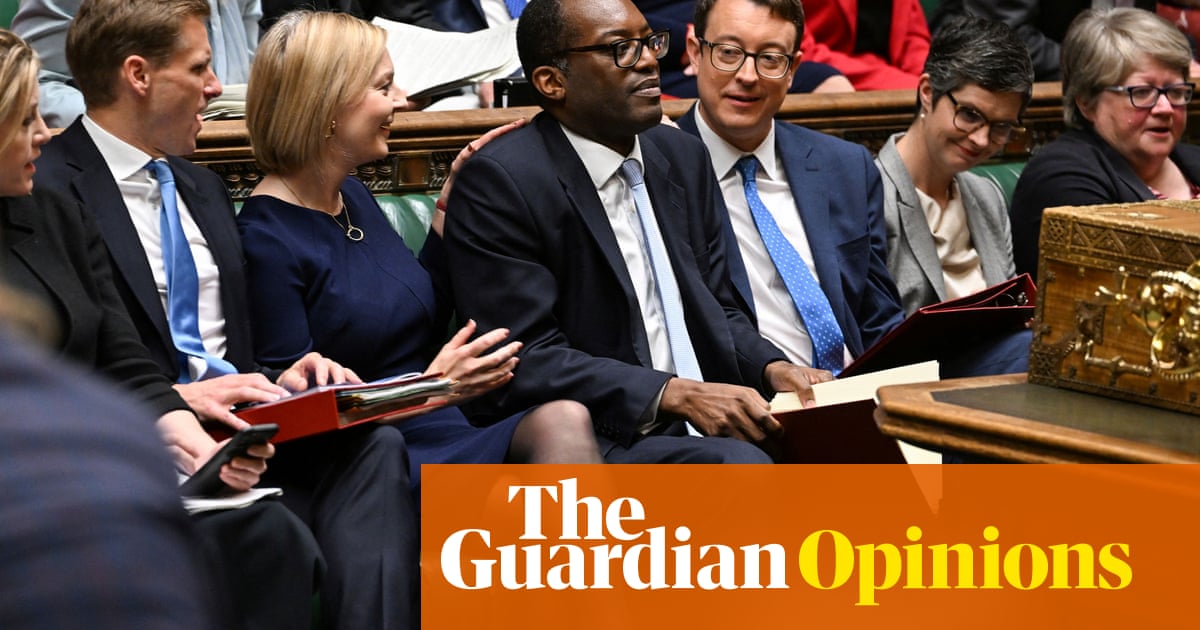
Last week marked a decade since an undercover Metropolitan police officer, known only by his codename V53, shot and killed Mark Duggan, an unarmed 29-year-old father, following a “hard stop” on Ferry Lane in Tottenham. The disturbances that ensued constituted the most serious unrest for a generation. In the four nights that followed Duggan’s killing, police recorded a total of 5,175 individual riot-related offences, 300 police officers injured and five people killed.
Immediately, politicians from all sides were united in condemnation, swiftly foreclosing the possibility of reading the unrest as political. “Criminality pure and simple,” was prime minister David Cameron’s verdict. “The only cause of a crime is a criminal,” stated the then home secretary, Theresa May. The unrest was “not a genuine outlet of political angst, nor a reaction to police conduct”, according to the London mayor, Sadiq Khan, but “simply criminality on a devastating scale”. That framing licensed the harshest crackdown on public demonstrations in public memory.
The reaction of the Crown Prosecution Service, overseen by Keir Starmer, was in many ways as startling as the unrest itself.Magistrates courts held hearings throughout the night to process the thousands of people arrested. Serious concerns about due process, the quality of decision-making, access to legal advice and the wellbeing of vulnerable children and young people in court were dismissed. By August 2012, more than 3,000 people, including over 700 under-18s, had appeared in court for riot-related offences. The average custodial sentence for riot-related offences was almost 18 months – four times longer than the average for comparable crimes the previous year. And marginalised communities bore the brunt: 39% of those charged with riot-related offences identified as black and, compared to white defendants, they were less likely to be granted bail and more likely to be sentenced to prison.
Retelling the story of the summer of 2011 matters because what happened in those four nights of unrest still haunts our politics today. The riots and the state’s response to them were not an aberration – they have shaped the government’s response to structural racism ever since.
To understand what happened in the summer of 2011, I interviewed the civil servants, lawyers and judges who presided over the immediate response to the unrest.
Duggan’s death at the hands of the police was often simply left out of people’s memories, or its relevance dismissed, allowing important decision-makers to imagine the riots were unprovoked. A senior civil servant at the Ministry of Justice struggled to recall the cause of the unrest: “That’s right, the Tottenham stuff,” he said to me in an interview, “I was thinking of [Charles] De Menezes for a while there”. A judge who had sentenced a number of young people also removed the killing of Duggan from the picture, telling me that “although the riots appeared to start because of the shooting of the young man in Tottenham, that clearly wasn’t the grievance, if there was a grievance, from other parts of the country”.
But it wasn’t just the killing that immediately preceded the riots that was forgotten by the people charged with cracking down on the rioters – a whole history of anti-racist action was elided in the rush to treat the unrest as “unprecedented” and worthy of exceptional punishments. One magistrate I interviewed recalled the disturbances as “a very, very unusual set of circumstances, and something that the English justice system had never had to tackle in modern history”. Despite its unique elements, 2011 was in fact part of a long history of uprisings in postwar Britain. The parallels with disturbances in Brixton, Tottenham and Toxteth in the early 1980s should have been clear: a Conservative government enforcing austerity politics, high unemployment, especially among young people of colour, and increasing tensions between minoritised communities and the police – often exacerbated by the assault or killing of a black resident by the police.
But the legacy of the unrest stretched far beyond the immediate crackdown. The riots became a pretext for a host of programmes targeting so-called troubled families, not least Boris Johnson’s gangs matrix, further stigmatising and criminalising already marginalised individuals and communities. And the events of the past year suggest the same tactics used in 2011 still dominate the government’s thinking on racial inequality and the right of protest.
When Black Lives Matter protesters took to the streets of London, the government flatly refused to grapple with their concerns about structural racism and proposed fast-track court processes, like those used in the wake of the riots, so that protesters could be jailed within 24 hours of their arrest. When the country’s footballers attempted to express solidarity with marginalised black communities, it was decried as “gesture politics” and weaponised in the increasingly heated culture wars dividing the country. And when the government released its landmark review of racism in the UK, the Sewell report, it minimised the significance of structural and systemic inequalities, with its own commissioners and informants levelling serious accusations of denial and distortion at ministers, and causing leading UN experts to condemn it as “a politicised erasure of the racialised realities” facing black Britons. Now, with the authoritarian policing bill wending its way through parliament, it’s clear that the tactics of 2011 still dominate government policy – silencing, criminalising and punishing anti-racist protest while doing nothing to address the profound injustices that mark the lives of black communities across the UK.
The amnesia that characterises our memory of the riots isn’t simply inaccurate – it is dangerous. Without learning the lessons of the past, we are doomed to repeat our failures.
Chloe Peacock is a research associate at the Centre on the Dynamics of Ethnicity at the University of Manchester












